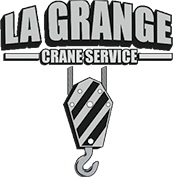Understanding how to read a crane load chart allows you to calculate the crane’s load capacity as it relates to the boom angle and length. Most lifts are planned using computer simulations these days. And load indicators in the cabs signify when lifts approach or exceed a crane’s capacity. But knowing how to read crane load charts is still essential when working with cranes.
Every manufacturer’s crane load charts will look a little different. But they should all include the same basic information. Let’s look at a load chart for the Grove RT650E as an example:
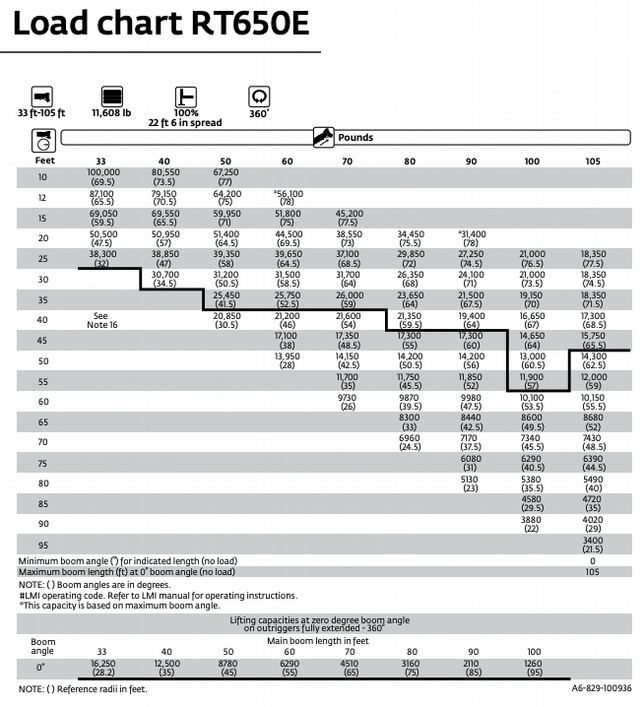
Notice the four icons along the top. Each signifies a specific piece of information about how the crane must be configured for the figures of the chart to be accurate.
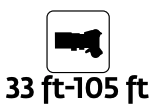 |
The chart provides information about lifts when the boom length ranges from 33’ to 105.’ This means it covers the full extension of the boom but does not have information about load capacities with a jib attached. |
 |
The chart is based on lifts that use 11,608 lbs of counterweights. |
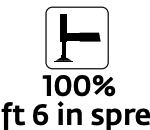 |
The chart only applies to lifts with all outriggers fully deployed, creating a 22’ 6” base for the crane. |
 |
Figures are based on lifts where the cab can rotate 360°, as opposed to “over rear” lifts. |
The chart provides information about lifts when the boom length ranges from 33’ to 105.’ This means it covers the full extension of the boom but does not have information about load capacities with a jib attached.
The chart is based on lifts that use 11,608 lbs of counterweights.
The chart only applies to lifts with all outriggers fully deployed, creating a 22’ 6” base for the crane.
Figures are based on lifts where the cab can rotate 360°, as opposed to “over rear” lifts.
The information in this load chart is only accurate when the crane is configured to meet all of these conditions. Many cranes will have multiple load charts to cover all possible configurations. And it’s essential that you only reference the chart that matches the parameters of your lift.
Looking back at the load chart, you should see another icon ( ![]() ) just above the left column of the chart. This signifies that the figures in the left column refer to the horizontal distance from the center pin to the end of the boom. This is what’s known as the load/lift//boom/operating radius. To understand what the load radius is, let’s look at the working range diagram that accompanies the crane load chart.
) just above the left column of the chart. This signifies that the figures in the left column refer to the horizontal distance from the center pin to the end of the boom. This is what’s known as the load/lift//boom/operating radius. To understand what the load radius is, let’s look at the working range diagram that accompanies the crane load chart.
How to Read a Crane’s Working Range Diagram
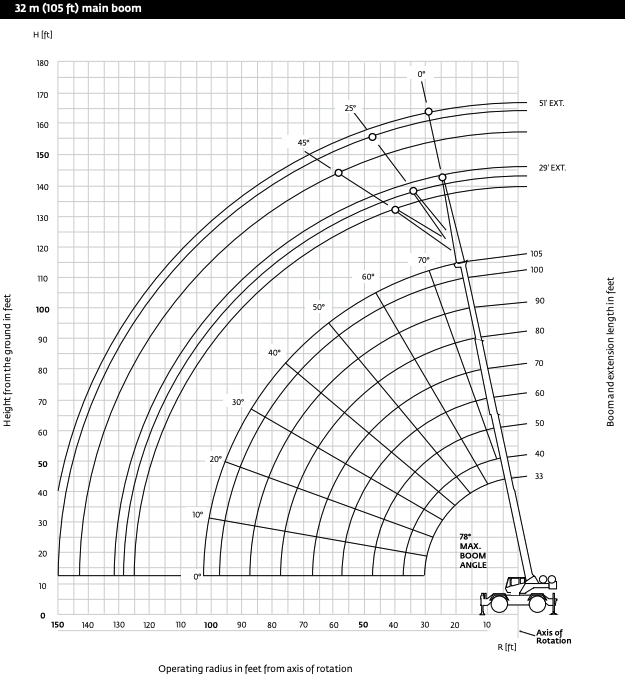
The measurements going up the right side of the chart note the boom length (in feet) at various levels of extension. The arced lines extending from each of these measurements show the position of the boom at various lift angles.
The two highest measurements, 51’ EXT. and 29’ EXT., represent the length of a luffing jib added onto a fully extended main boom. These measurements are each linked to three arced lines instead of just one to account for the angle of the jib.
The highest of each of these sets of arced lines represents the position of the load when the jib extends straight out from the boom. The lower two arced lines in these sets show the position of the load when the jib luffs 25° and 45° down from the main boom.
When you know the boom length (including the jib length, if applicable) and its angle, this chart allows you to easily calculate the load radius. To do so, follow the arced line that corresponds to a particular boom length until you reach the radial line that corresponds with a given lift angle.
The x-coordinate where these two lines intersect equals the boom radius.
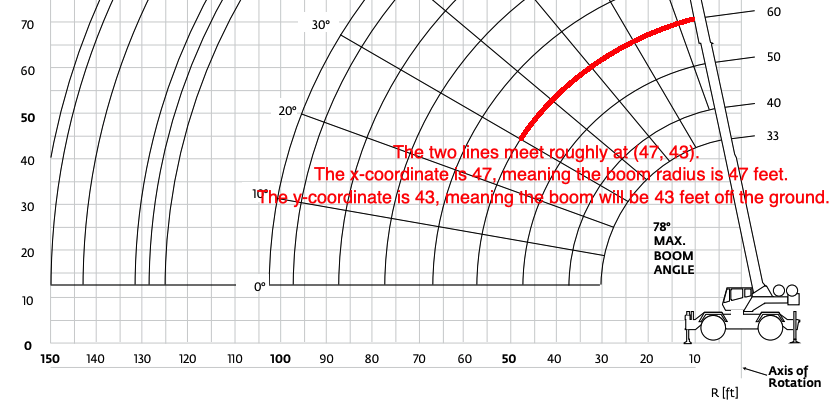
As an example, say the boom length is 60’ and the boom angle is 30°. With these parameters, the chart illustrates that the lift radius would be just under 50’. Keep this in mind as we get…
Back to How to Read a Crane Load Chart
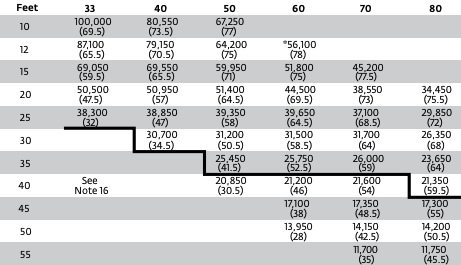
As mentioned above, the left column signifies the lift radius. The top row signifies the length of the boom. Looking at where these rows and columns meet, you’ll see two numbers in each cell. The first number is the crane’s load capacity for the given boom length and lift radius. In parentheses just below that number is the corresponding boom angle.
In our example above, we looked at a 60’ boom angled to 30° to get to a lift radius just under 50’. If we follow the 60’ column down to the 50’ row, we see that the crane would have a load capacity of 13,950 lbs at 28°. If we needed to lift a heavier load, we would need to shorten the boom length and/or position it at a higher angle, both of which would reduce the lift radius.
The Importance of Knowing How to Read a Crane Load Charts
When a crane lifts a load that exceeds its capacity, the results can be disastrous. The load can come crashing to the ground, tipping the crane in the process. This is why lifts are meticulously planned in advance. However, it’s still essential for crane operators to understand how to read crane load charts as a safety precaution in case anything changes on site.
Cranes are defined by their capacity; you’ve no doubt seen reference to a 40-ton crane. However, lift capacity varies according to the length of the boom and its angle.
Think about lifting the heaviest object you possibly can. Now imagine holding that object out at arm’s length. Almost certainly, the object will come crashing to the ground.
This same principle applies to cranes. If a 40-ton crane tries holding a 40-ton load with its boom fully extended directly in front of it, the load will come crashing to the ground. Knowing how to read a crane load chart ensures that you will never put yourself in this kind of situation.
Here at La Grange Crane, we use 3D Lift Planner to plan every aspect of every lift we perform in advance. In fact, the precise details we provide in every plan have helped us to win back-to-back Lift Plan of the Year awards.
Still, we make sure that all of our employees know exactly how to read crane load charts. Because in the crane industry a “little” mistake can cause irreparable property damage, or worse. So we take every possible precaution to ensure that all of our lifts go exactly as planned.
If you’re ever in the market for all-terrain crane rentals or boom lifts in Chicago or the surrounding areas, give us a call. Our fleet of cranes and team of expert operators can safely and efficiently handle any project you may have. Touch base with us today at 708-354-3510.
